Time moves differently when you have a baby. Though being stuck at home without seeing family and friends makes things feel sluggish, I also can’t believe that my daughter is approaching three months old in a mere few days. Maybe it’s the fact that I turned 30 at the beginning of the month, but I’m starting to feel like an old person who can’t stop saying “Where has the time gone?” Not that 30 is remotely old; in fact, I’ve been excited to reach this milestone for quite some time…though doing so while isolated has been an odd experience.
Still, some exciting things have happened this month. I’m back to recording with Manga Machinations! It’s so nice to be back talking about manga with the guys, getting a little time away from mom duties. I’m super excited that we’re doing a Yu Yu Hakusho retrospective series right now! I haven’t had an opportunity to write all my feelings about Yu Yu Hakusho (because they are vast and hard to articulate), but it’s one of my favorite series. To pique your interest, there’s an awesome promo video, as well as my reread thread on Twitter. And of course, there’s the first episode! Check it out!
Happily, I’ve been able to do quite a bit of reading this month. I’m starting to get into a good routine where that’s concerned, trying to read when Severina nurses (if she’s cooperative, which is less often lately), and then getting more reading done at night after she’s down for bed. Writing gets done during nap times — like right now, she’s sleeping on me in a sling. By the time I finish this blog post, I probably will have come back to it several times. There’s a learning curve to balancing working and parenting (and luckily I have my husband home right now to keep helping), but we’re getting the hang of it. In many ways, being at stuck at home right now is working to my benefit, even if it doesn’t always feel like it. At least there’s plenty to read!
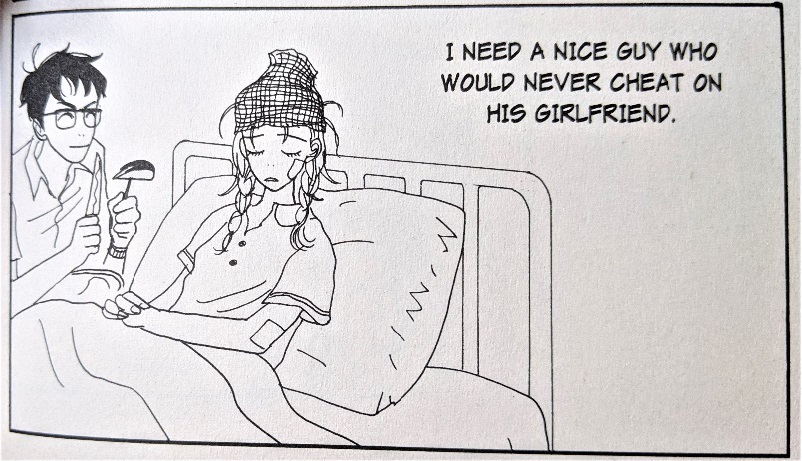
Happy Mania, Volume 1 — by Moyoco Anno, published by Tokyopop (out of print)
I’ve been feeling really nostalgic about manga lately. I’m wondering if this is a byproduct of no longer working in comics, and therefore not being up on everything that’s new right now at all times like I used to be. Regardless, this led me to find some used copies of old Tokyopop volume ones that I never got to read back when they were in print. As someone who came late to Moyoco Anno, it was important to me to check out Happy Mania. And as I expected, it was a riot. Protagonist Shigeta works at a bookstore and is desperate for a boyfriend. She continually keeps going out with guys who take her for granted, meanwhile her coworker Takahashi is clearly in love with her — and is a decent, dependable guy to boot. Shigeta is very much her own worst enemy when it comes to romance, and I continue to admire Anno’s willingness to depict women with glaring flaws. Her protagonists toe that line between insufferable and lovable, and as always, her frenetic artwork is a refreshing break from overly-trendy styles. It looks like there’s a sequel to this series in Japan. With the original out of print here, I doubt this new series will see the light of translation, but I can hope!

Spy X Family, Volume 1 — by Tatsuya Endo, published by VIZ Media (available digitally through Shonen Jump, print version out June 2nd)
People have been talking up Spy X Family for a while, and I finally got on the train because it’s coming out in print, and I have an opportunity to review it for Comics Beat (which I plan on doing). This is another one of those circumstances where I kick myself for not reading it sooner; it’s way more up my alley than I had anticipated! A spy known as “Twilight” is put on a mission to infiltrate the prestigious school, necessitating the acquisition of a fake family. The catch is that his “family” cannot know about his mission, otherwise it will be jeopardized. He adopts a little girl named Anya, not realizing that she is the result of government experimentation that left her with psychic abilities. Through happenstance, he marries an assassin named Yor, who is also trying to keep her job a secret from him. Little Anya is the only one who knows the whole story, and she isn’t telling anyone! I’m sure I’ve mentioned before that I’m a sucker for found family stuff, and I especially love Twilight’s reasoning to become a spy in the first place. The first volume is equal parts hilarious and heartwarming, and I am definitely planning to continue reading.
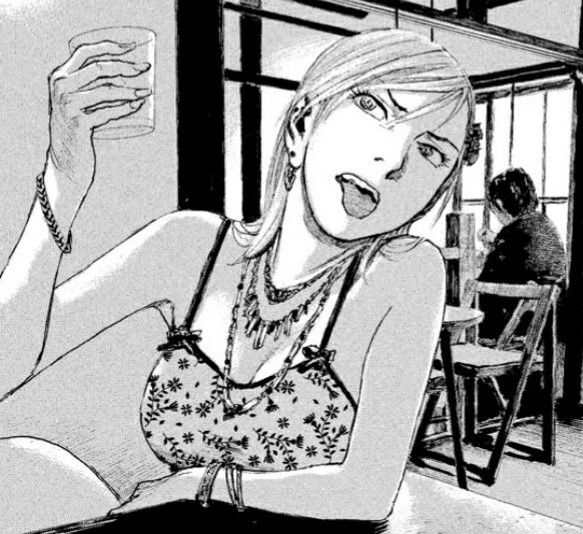
Wave, Listen to Me!, Volume 1 — by Hiroaki Samura, published by Kodansha Comics (digital available now, print version out May 26th)
Time to confess that I’ve never read Blade of the Immortal (and I suspect it’s not really my kind of manga). This is actually the first Hiroaki Samura manga I’ve read all the way through, and I was surprised by how much I liked it. Minare Koda is a loud-mouthed waitress who spills her drunken heartbreak to a local radio show host at a bar one night. He records her ramblings and airs them on live radio, pulling her into the world of broadcasting with his desire to harness her untrained but ceaseless voice and see what comes of it. Minare reminds me a bit of Shigeta from Happy Mania, actually, in that she’s a fast-talking lady preoccupied with her love life who goes off on wild fantasy tangents a lot. Samura is an excellent artist, so I’m really glad to be able to read something of his that doesn’t seem to rely on the, uh…torture of women. Though Minare might feel tortured to some extent in this series! There’s a current anime adaptation of this series airing right now, as well, which makes the print version’s timing excellent.
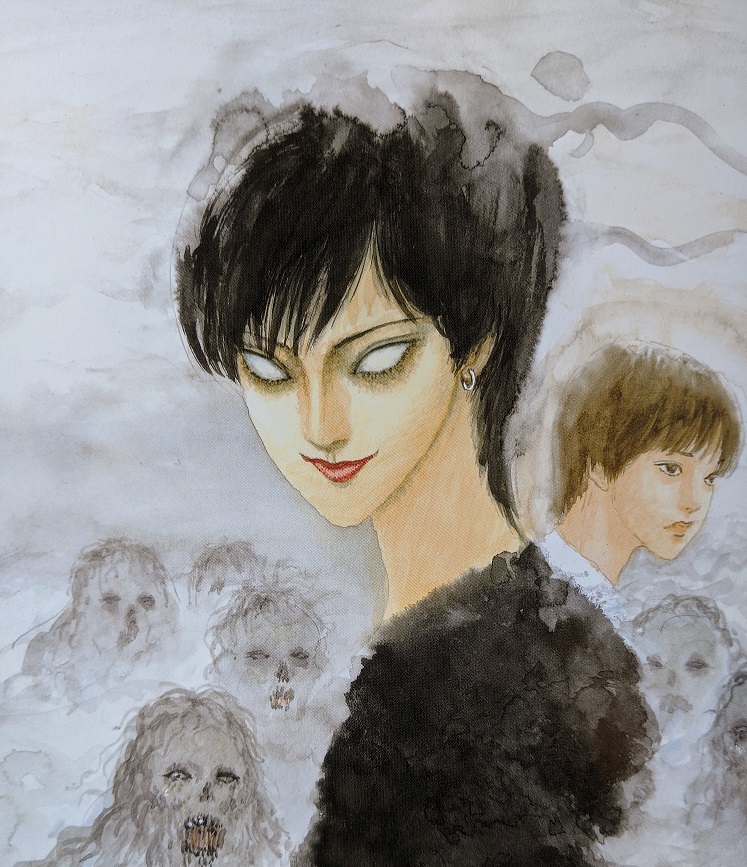
The Art of Junji Ito: Twisted Visions — by Junji Ito, published by VIZ Media
When VIZ announced that they were going to be publishing this for North America, I was really glad I hadn’t dropped $90CAD on the original Japanese printing at TCAF last year — though it was extremely tempting. To say that it’s a gorgeous collection of paintings and illustrations is an understatement. The silver and black of the jacket is echoed on the interior pages that were originally black and white, giving the feeling that they are truly special. Most fans are used to seeing Ito’s pen and ink illustrations, and while there are plenty of those, it is exciting to see his painting work, and to learn in the interview at the back that his original intention was to be a painter and not a mangaka at all. As always, his quirky and self-deprecating sense of humor shines through in translation. This is a must-have for an Ito completionist (like myself), and a great addition to any art book library, as well.
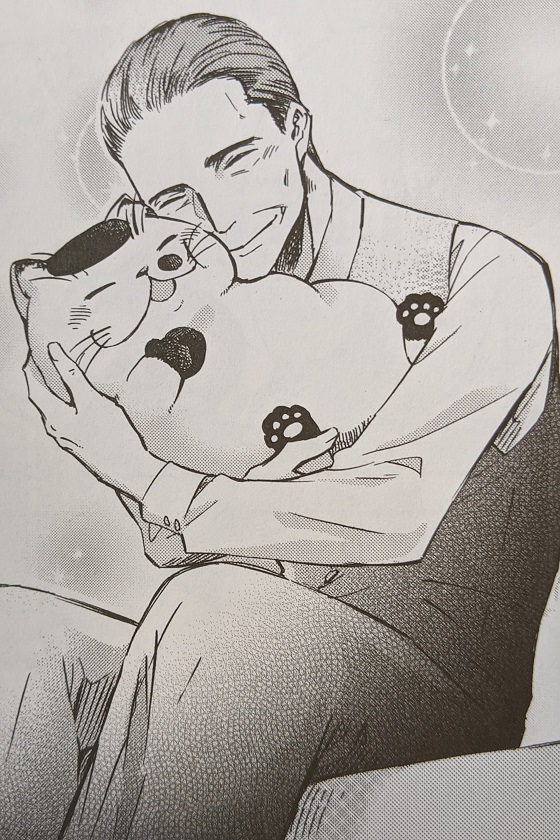
A Man and His Cat, Volume 1 — by Umi Sakurai, published by Square Enix
Square Enix is having a moment right now with the release of the new Final Fantasy VII remake. But a couple months back, they released their first manga as a North American publisher (having already been a publisher in Japan for many years). One of those new manga is A Man and His Cat, AKA the exact kind of thing I love to read. In it, a chubby, so-ugly-he’s-cute cat who has been ignored by shoppers at a pet store for over a year is worried that he will never find his forever home. One day, however, an older gentleman adopts him, naming him Fukumaru. The man had been living all alone after the death of his wife, and the two had always talked about getting a pet. The first volume is packed with situations instantly recognizable to those who share their home with a cat. In many ways, it reminded me of What Michael?, except there is a loose ongoing plot and far less absurdist humor. It’s sweet, it made me chuckle, and I’m looking forward to more!
If we stay in a state of relative physical isolation for much longer, all of my monthly favorites are going to be this long! Hopefully there’s something here to help you pass the time, as well. Stay safe!
art
July Favorites
It’s been another bustling, busy month, but I made good on my promise and read more comics in July! I’m still more behind on my reading than I’d like to be, but it feels good to get back into some kind of routine (even if I have been doing all my work from our new couch instead of at my desk…).
At the top of the month, I started recording a four-part series with the wonderful gentlemen of the Manga Machinations podcast, a retrospective of Akiko Higashimura’s EISNER-AWARD WINNING Tokyo Tarareba Girls. Long-time readers and folks who follow me on Twitter will know that this is one of my absolute favorite modern series. I wrote about my feelings on the first volume ages ago, and those feelings have multiplied and intensified with each passing volume. By the time this post goes up, we’ll be three-quarters of the way through the retrospective. I hope that those of you who have had a chance to read the series will listen to our discussion of it and give us some feedback on your feelings about Higashimura’s love letter to 30-something women and the problems they face. It’s thrilling that I was able to talk about this series in the midst of its Eisner victory. Deb Aoki asked for some of my thoughts on the win and its potential affect on sales for her Answerman column over on Anime News Network, as well. I can’t reiterate enough how every manga fan should follow Deb on Twitter if they want all the latest news from cons and publishers. She’s a force of nature with her Tweeting skills!
I’ve also continued my work for The Comics Beat with reviews for Beastars volume 1, Junji Ito’s Smashed anthology, and the first two volumes of Satoko and Nada. Writing long-form manga reviews is my favorite job right now, hands down. It’s nice to be able to take the skills I utilized recommending manga to customers through working at Comicopia and translate that into recommending manga to readers all over the world. Since leaving the shop, I had been feeling a little isolated from the comics community, but writing for The Beat has helped me reaffirm my place within it and remind me that the work I do is worthwhile and (hopefully) helpful to readers.
So a lot is happening for me these days, and I’m hoping to have even more good news for you next month. But for now, it’s time to talk about what you all came to read — my favorite comics that I read in July. Some of these will likely be given the full Comics Beat review treatment in the near future, but I wanted to write about them a bit in a space where I can let my personal bias really shine through. :3

Popocomi, by various — published by Eriko Obayashi of Books and Gallery POPOTAME
I bought this wonderful anthology at TCAF and finally, finally sat down to read it. Organized by the Japanese comic shop POPOTAME, this collection features works by “underground” Japanese mangaka — something readers in the West rarely get to see. This collection runs the gamut from more straightforward short narratives to surreal or nonsensical offerings. It certainly won’t be everyone’s cup of tea, but I was really impressed with the variety and the skill on display. I was especially fond of Ikumi Nakada‘s melancholy “In a Worm-Eaten Town” and Maiko Dake‘s bubbly “FROM the BOOK SHOP.” They’re very different little glimpses into the lives of a couple of young women, but they both struck me with their ability to convey tone and emotion through the expressiveness (or lack thereof) of their characters. This collection was created in collaboration with TCAF and translated by the incomparable Jocelyne Allen, who has translated scores of my favorite books, provided interpretations for Junji Ito during TCAF, and who is a lot of fun to hang out with. The book was enthusiastically sold to me by one of the artists (whose name I unfortunately didn’t catch!), and came with a sweet little map of bookshops in Ikebukuro-Mejiro. The whole experience of buying and reading this book was unique, and it reminded me of the importance of connecting bookshops and artists with their products — something I believe in very strongly. Support your local bookstores! Support your local artists! Remember that a lot of love and care goes into putting together the works you love.
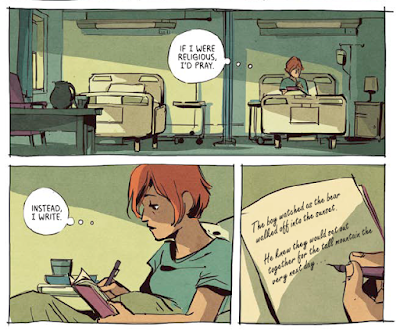
Waves, by Ingrid Chabbert & Carole Maurel — published by BOOM! Studios
I’m going to be completely honest — I sobbed through this book. The protagonist is pregnant, and the reader is made to believe this is not her first pregnancy, but that her other attempts thus far have failed. She and her wife are deeply invested in having a child, but because the protagonist’s condition is so tenuous, she is made to stay in the hospital. Unfortunately, things take a turn for the worst and the couple loses their precious son — stillborn. God, I’m starting to tear up just typing this! But the story is not just about losing the baby. It is about how that loss is used to help the protagonist push forward and find hope in a new career of writing books for children. This is an autobiographical comic with gorgeous illustrations by Carole Maurel that utilize color to great success. It’s definitely not a light read, but it is short and extremely affecting. I thought it was brilliant, even if I had to read a lot of it through blurred vision.
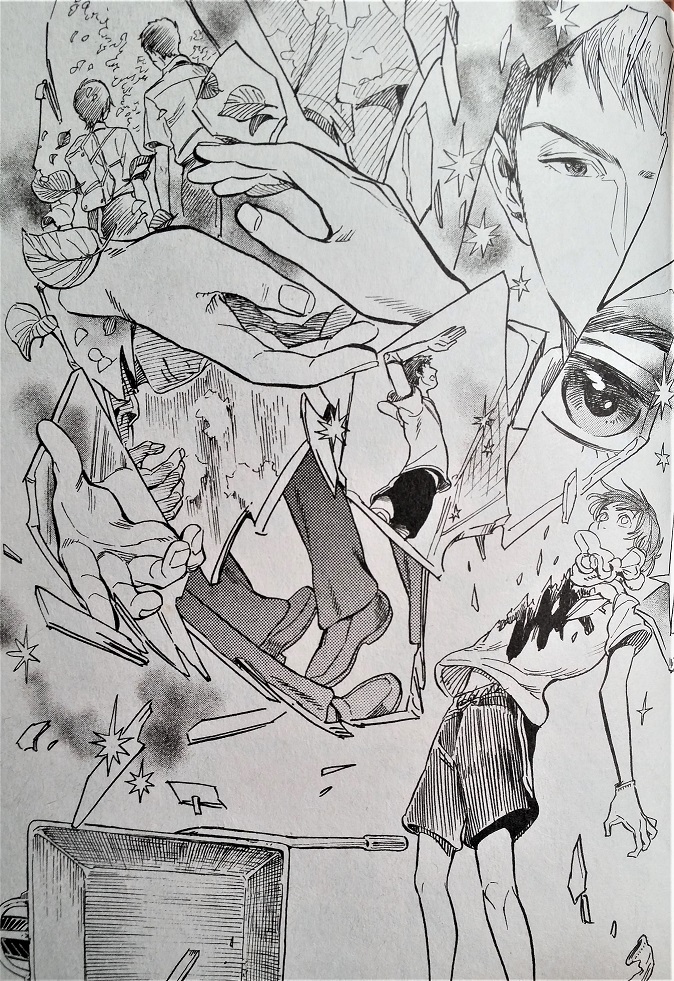
Our Dreams At Dusk, by Yuhki Kamatani — published by Seven Seas Entertainment
I have been SO excited for this release for so long, and I finally got my hands on a copy through the library. It is a little different from what I anticipated, but I’m not at all disappointed in it; rather, I think it’s great, and I can’t wait to check out the next volume which just recently came out. Protagonist Tasuku Kaname is struggling at school. Not with bad grades, but with being the new kid and being singled out for being gay. Of course, he didn’t tell anyone that he was gay, and he vehemently denies it, but the teasing comes anyway, to the point where Tasuku’s conflicting feelings nearly lead him to make a fatal decision. Luckily, he is distracted by a woman he sees in the distance who appears to be jumping to her death as well, and when he runs to see what became of her, he is confronted with her, whole and hale, and referred to by everyone in the drop-in center he found her in as “Someone-san.” Through this strange encounter, Tasuku meets others who are queer, and he is able to begin confronting his own fears about his sexuality and what it means for his life and his relationships. I find it deeply gratifying to have a fictional LGBTQ+ manga written by a non-binary creator and depicting a supportive queer network. A lot of the genuine queer works we’ve seen coming Stateside are autobiographical, and while their messages are so important, it is nice to see the field open up to fiction that isn’t relegated to BL or yuri — both of which are great in their own way, but which seldom reflect lived experiences or common concerns, especially amongst queer youth. Kamatani is know for their other manga series, Nabari no Ou, and I’m hoping that the name recognition might help get this manga into the hands of those who need it most — though my guess is that it’s already doing quite well based on the force of its subject matter alone. The importance of the story and characters aside, Kamatani’s artwork is gorgeous — fluid and expressive, with a boldness that I wasn’t expecting based on the dreamy cover designs.
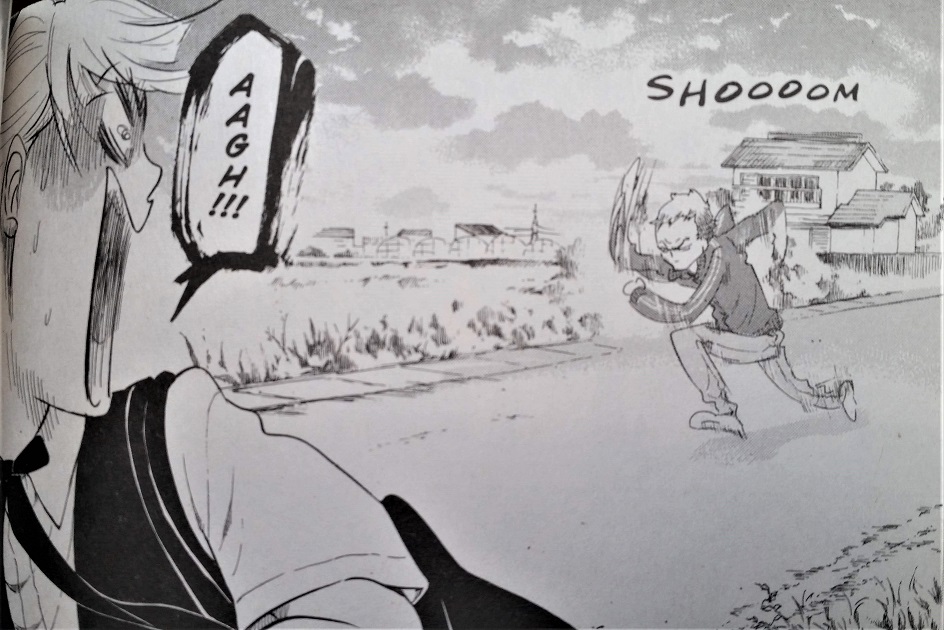
Blank Canvas, by Akiko Higashimura — published by Seven Seas Entertainment
This month I finished reading Tokyo Tarareba Girls and then immediately delved straight into Higashimura’s autobiographical work Blank Canvas, where she details her teenage experience of attending art classes outside of school to help boost her portfolio for college, and her relationship with an old, ornery art teacher who helped her improve immensely. I love Higashimura’s no-holds-barred, unflattering depiction of herself at that age: cocky, under-motivated, and underneath everything, deeply uncertain. This helps to shed new light on Higashimura’s many successes as a mangaka, reminding readers that while there might be something about her that is innately talented, it took years and years of work and drilling to become the master she is today. I could have used this manga as a self-assured teen, if only to light a fire under my butt to work harder at my dreams and to seek out the guidance I didn’t really think I needed. I’m still a little too cocksure sometimes, so it’s amazing to see someone I respect as much as Higashimura humble herself for her audience in this way. I’m not sure I’d have the same confidence if I were her, but she has absolutely, 100% earned it. And besides, she seems like the kind of teen it would have been fun to be friends with.

Classmates, by Asumiko Nakamura — published by Seven Seas Entertainment
There was a time, not too long ago, where I was very skeptical of Seven Seas’s output. They published a lot of works that were not for me in the extreme, with plenty of fanservice and an uncomfortable blurry line between what constituted age-appropriate content and what did not. And yet here I am today, promoting three of their recent manga with nothing but my highest accolades. At some point around the time they published My Lesbian Experience With Loneliness, Seven Seas took a deep dive into queer stories and have really set the standard for what types of manga readers are really scrambling for. Among those is one of my all-time favorite manga, Classmates. DMP had already owned this license, for digital distribution only, so I had read it a couple years back. I was struck then by a few things: the genuine sweetness of the story itself, and Asumiko Nakamura’s bizarre, stretchy, almost uncomfortable art style (which I adore). In my twenty-ish years of manga reading, I’ve read a lot of BL. A vast majority of it has been purely horny trash, stuff I didn’t particularly even like but felt compelled to read just to see if I could find the hidden gems. And the hidden gems are there, but you have to wade through scores of tropes: near-rape or rape scenes, coercion, incest, abuse, student-teacher relationships…basically, the tawdry, the inappropriate, and the obscene. But sometimes a manga like Classmates comes along — a sweet story about two teenage boys who fall in love and stumble through a predictable teenage relationship without too much meddling from the outside. And it’s a happy manga, one that brightens your day with its effortless charm and its delightfully wacky artwork. Nakamura’s long-limbed, long-lashed, almost alien-looking characters seem suited to eroguro works or philosophical stories — and she’s done things like that, too (I’m thinking specifically of Utsubora) — but somehow her distinct flair makes the characters’ expressions of amorousness, embarrassment, and teenage hilarity all the more effective. I’m so glad that this series has gotten the print treatment, and I hope that it draws in many, many new readers!
Phew! A really long one this month to make up for June’s scarcity. It’s nice to be back on a roll with reading — let’s hope I can keep it up for a while. Until next month, I wish you all happy reading!